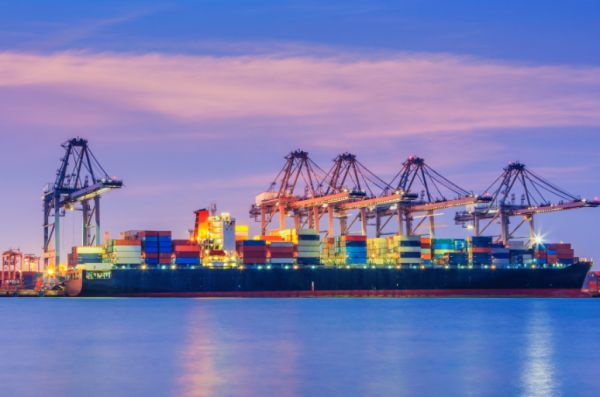
As container ships grow ever bigger, the potential of catastrophic losses is also growing. On top of that, the container shipping trade continues to be plagued by losses related to misdeclared container weights and the misidentification of their contents, a danger that will only increase as ships get bigger. Marine insurers think two incidents of cracked container ship hulls last year and several fires were related to this.
Not that marine insurance companies have been faring badly in recent years; their cargo and hull loss ratios have been declining steadily and they have had to pay out smaller amounts of loss claims. The year 2013 was a banner year for the industry, as shipping losses totaled 94 worldwide, coming in under 100 for only the second time in the last 12 years, according to a new report by marine insurer Allianz Global Corporate and Security.
“We had an easy hurricane season in North America and cyclone activity wasn’t that much in the Pacific,” said Tim Donney, global head of Marine Risk Consulting for Allianz.
Although the total amount of cargo and hull insurance losses has not yet been tallied up for 2013, hull loss claims in 2012 amounted to $1.143 trillion, of which insurers have paid out $374 billion to date, according to data compiled by the International Union of Marine Insurance. The amount paid out could rise, because it takes several years to adjudicate loss claims. The hull loss ratio of paid claims declined to 16.69 percent in 2012 from 17.36 in 2011.
Cargo loss claims in 2012 amounted to $2.1 trillion, of which insurers have paid out $856 billion to date, IUMI said. The cargo loss ratio of paid claims climbed to 29.8 percent in in 2012, from 24.3 percent in 2011.
More than a third of total 2013 losses were concentrated in two regions, around South China, Southeast Asia, Indonesia and the Philippines, which saw 18 ship disasters, followed by the seas around Japan, Korea and North China, where 17 ships were lost. Only one 2013 ship loss was reported in North America, off the west coast.
“There is a tremendous amount of activity by container ships and other types of shipping in Asia,” Donney said in an interview with the JOC. “You also have some countries where there are great opportunities to make money but the safety regulations and enforcement activities haven’t caught up with the development of their industries.”
More than a third of the ships lost around the world last year were cargo ships, with fishing and bulk vessels the only other type to record double-digit losses, according to the Allianz report, Safety and Shipping Review 2014.
The total loss of two bulk carriers in Indonesia waters in 2013, the Harita Bauxite and the Trans Summer, highlighted the importance of proper cargo handling.
“They were in isolated areas where there is no regulation,” Donney said. “Reputable shipowners won’t enter those trade lanes or load at those ports, but some of the smaller startups try to do anything they can to make a buck.” He said there is very little enforcement of international regulations in some of these areas because the nations don’t have the resources to enforce them.
Several container ship fires appeared to be related to containers that may had cargo that was not correctly identified.
“The contents are what shippers describe them and are very rarely opened or inspected by customs or security people to see what’s actually in them,” Donney said. “They could have hazardous cargo that should be identified and stowed differently.”
He said that anytime there are fires aboard container ships, they are generally due to misdeclared cargos. He cited the two fires that started in August in containers aboard the Maersk Kampala and another that started in the hold of the Lilac, operated by CMA CGM. Another fire aboard the Zim Rotterdam in March engulfed 20 containers, although the origin of the fire is still not determined. Coincidentally, all three fires occurred in waters around the Suez Canal, but were not related to piracy, which has been declining in the Gulf of Aden and off the Horn of Africa.
Another problem in cargo losses is overweight containers.
“Nobody is weighing container before they are loaded aboard ships, and that might have been one of the contributing factor in the loss of the MOL Comfort,” Donney said. That ship broke into two parts in June of last year after suffering cracks amidships during heavy weather in the Indian Ocean. Both parts eventually sank. In a similar incident that was later traced to defective welding, the MSC Monterey suffered a crack in its hull in December while en route to Boston in heavy weather off Newfoundland and was forced to pull into Halifax.
Bigger dangers lie ahead as containerships get bigger. Carriers are ordering ever-more vessels of 18,000 TEUs and up.
“We already have quite a problem with containers being lost overboard,” Donney said. In February of this year, for example, the Maersk Svendborg lost more than 500 containers overboard in nasty weather in the Bay of Biscay. The Svendborg was only 7,200 TEUs, so the potential loss escalates with ships more than twice that size.
“They just keep building bigger ships and stacking the containers higher on deck, seven tiers high and going up,” Donney said. “We have the problems of losing more containers overboard and the problem of the container ship hull cracking.”
He warned that the maritime industry does not have a coordinated approach to deploying salvage tugs, barges and heavy lift ships to the scene of ship wrecks around the world.
“These ships are getting larger and larger, and salvage costs are going to continue to escalate,” Donney said.

Comments
Post a Comment